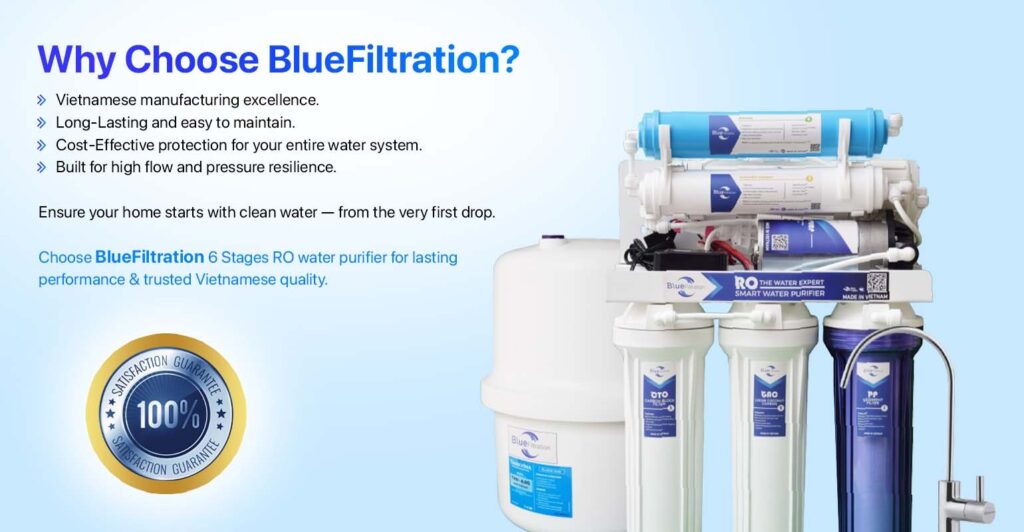
Stage 1 – (SED) Sediment Filter
Firstly, The water passes through a high capacity polypropylene sediment filter. It’s a Sediment filter that removes all the larger particles up to 0.3 microns, including rust, dust and sediment.
Stage 2 – (GAC) Granular Coconut Carbon Filter
At 2nd stage, Water enters in 100% Coconut carbon filter which eliminates contaminants up to 5 microns. During the second stage the water gets rid of the unpleasant chlorine, foul taste and odor, colors and cloudiness.
Stage 3 – (ACB) Activated Carbon Block Filter
At 3rd Stage, Water goes through a Activated carbon block filter. It’s further removes any residual chlorine, taste and odor. At this stage the filter also removes the difficult-to-remove chemicals, including chloramines.
Stage 4 – (ROM) Reverse Osmosis Membrane
At this Stages, water is pressed through the heart of the Blue Filtration Membrane – the high rejection TFC 100Gpd membrane with the micron rating of .0003 micron. This is the same technology that is used by companies in the production of bottled water. This NSF certified semi-permeable membrane effectively removes TDS (total dissolved solids), Virus , Bacteria , Lead, Arsenic, sodium, cysts, Giardia, chromium, and a long list of other 99 contaminants.
Stage 5 – (PAC) Post Activated Carbon/T33
The final stage utilizes a finer PAC Coconut Carbon filter, which acts as a final polishing inline filter. As the water leaves the storage tank, this filter removes any left residual tastes and odors and makes the taste of water fresh.
Stage 6 – Mineral Filter
This filter improves the qualities of clean water by adding necessary Minerals for proper human development and health minerals, such as Calcium, Magnesium, Sodium, Potassium and others readily found in many natural mineral waters.
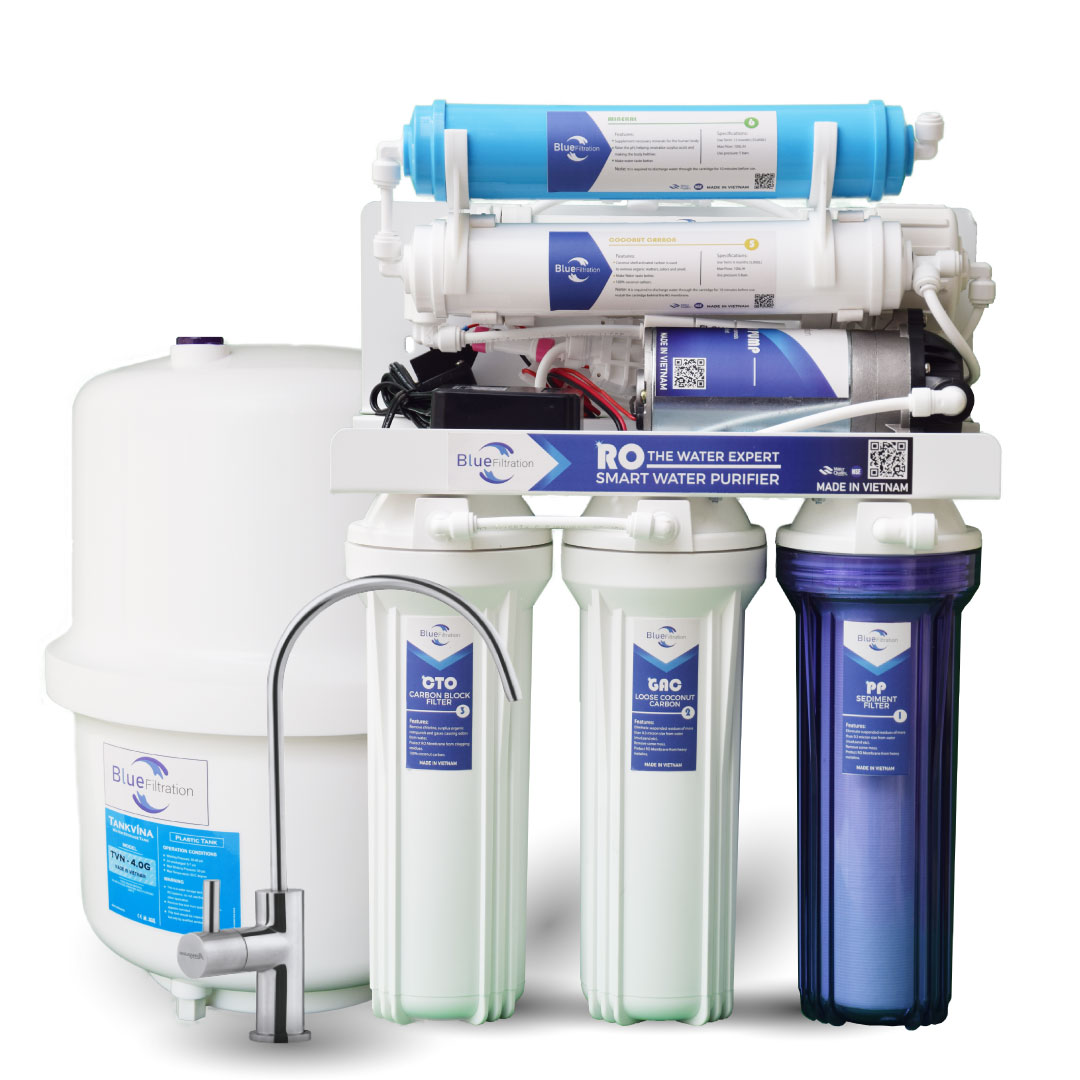
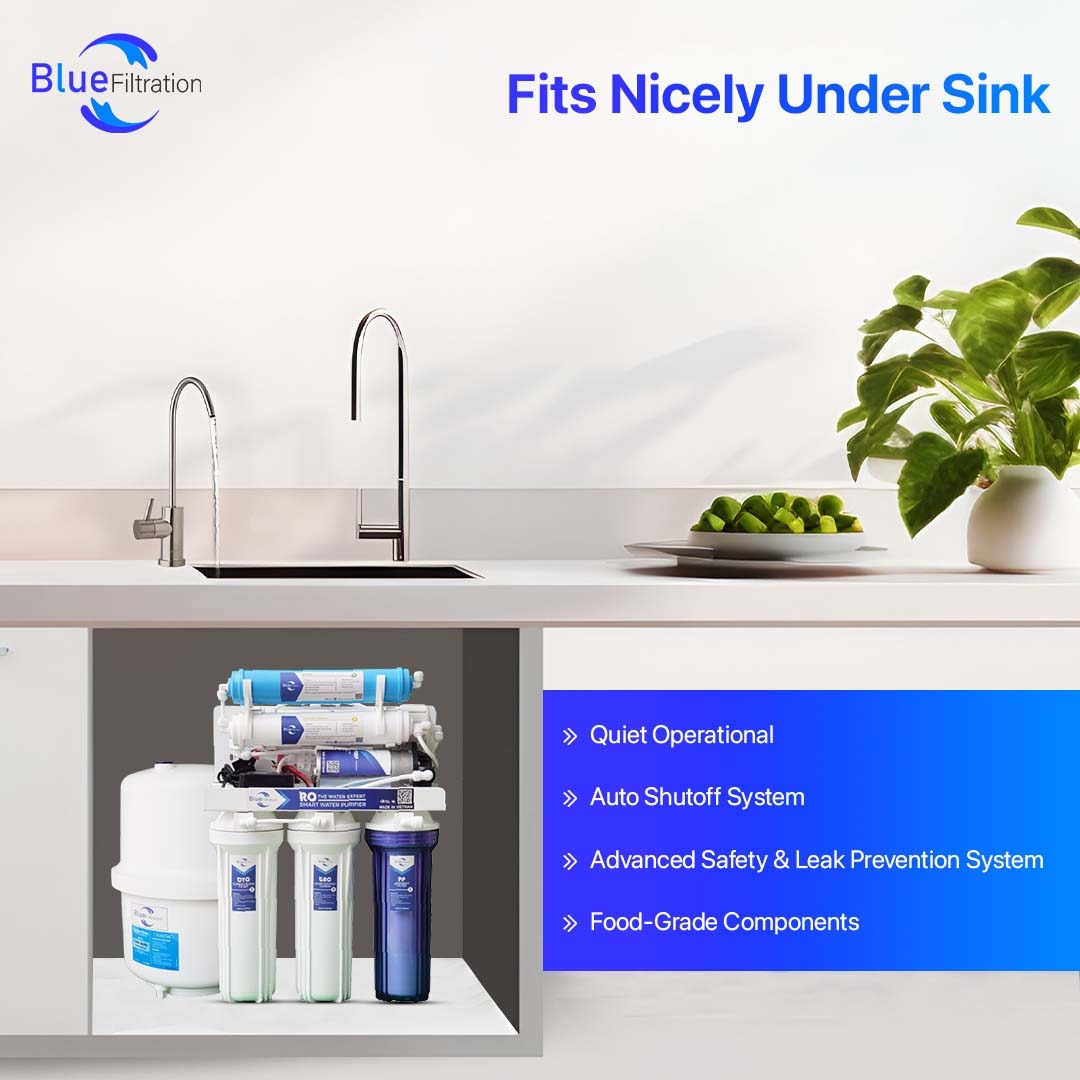
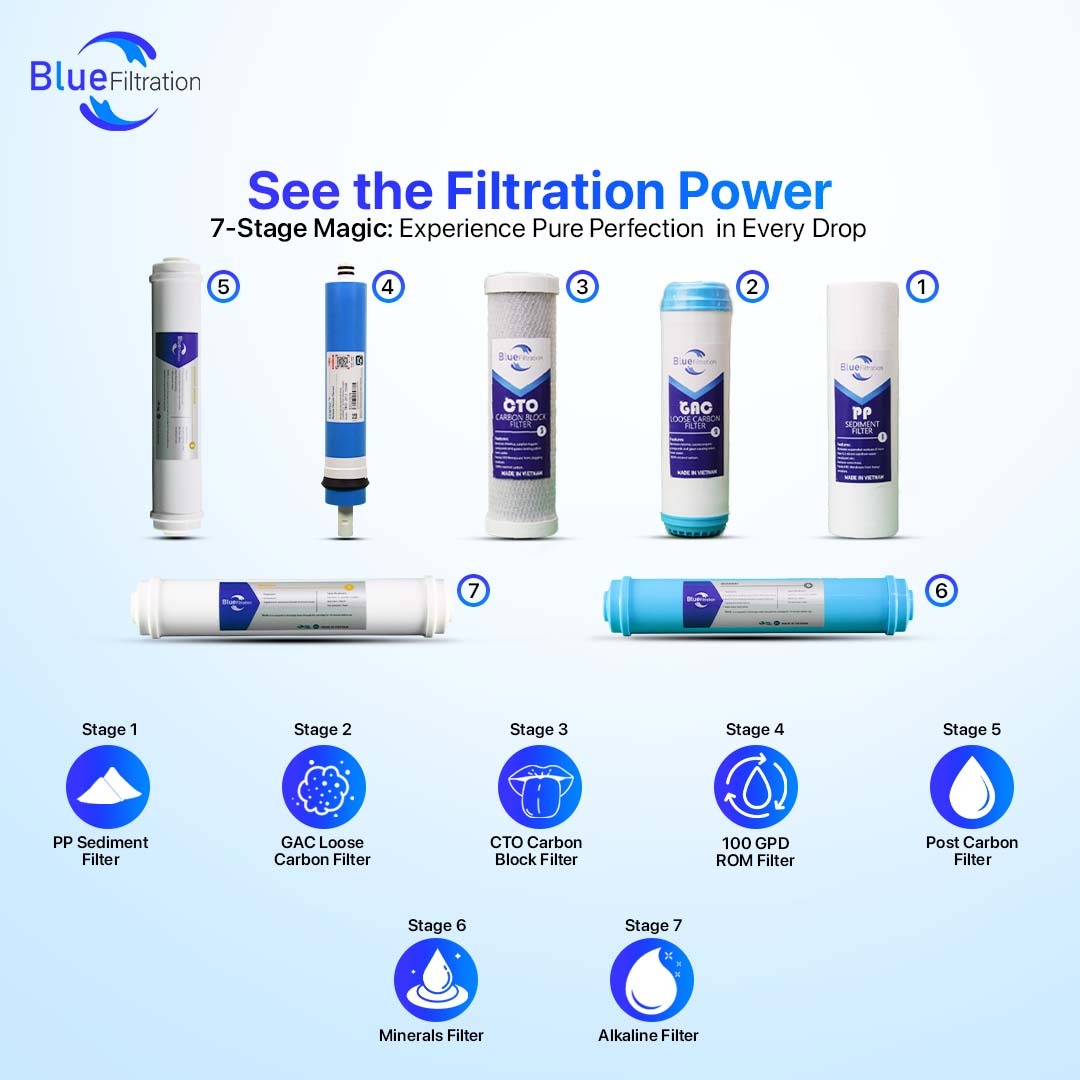
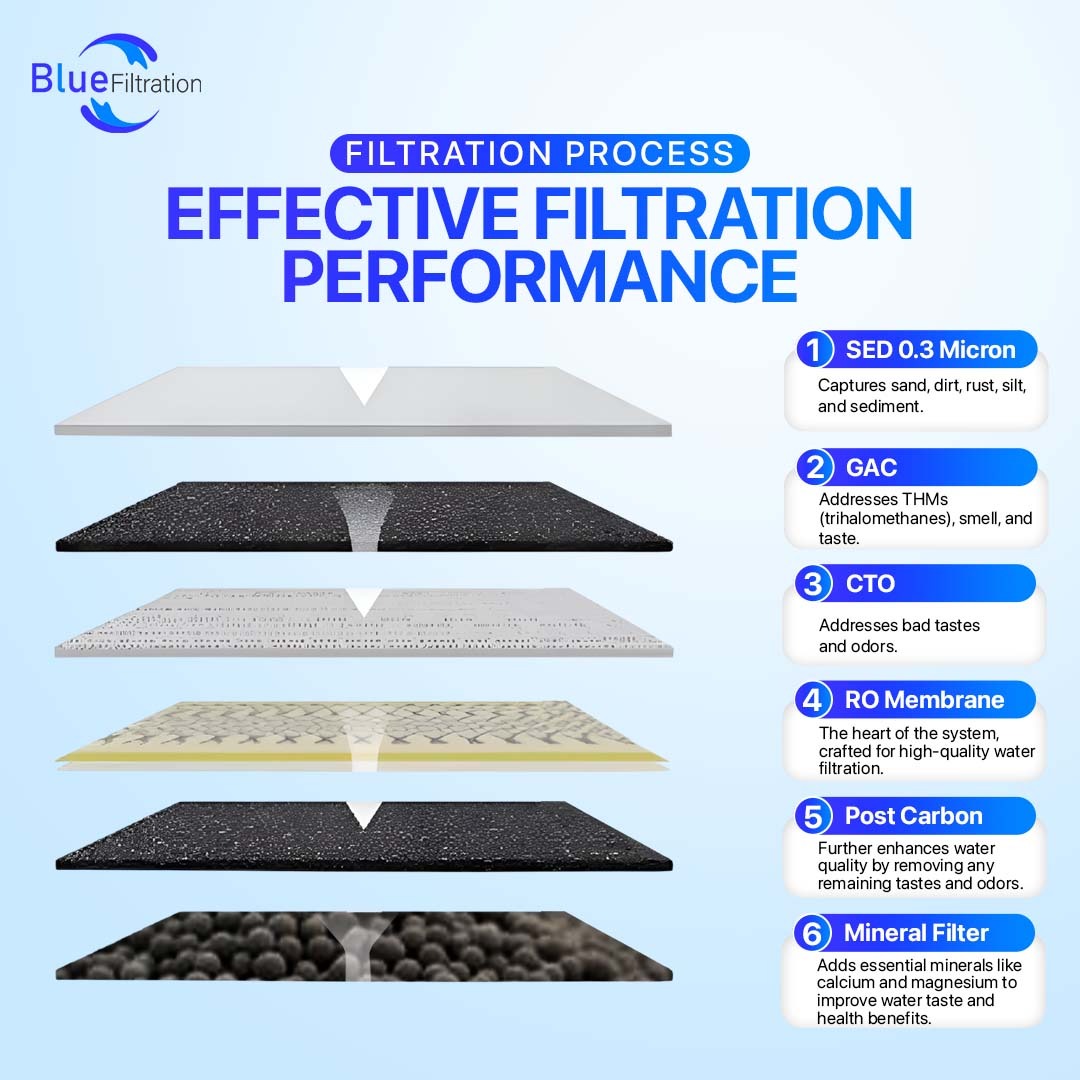
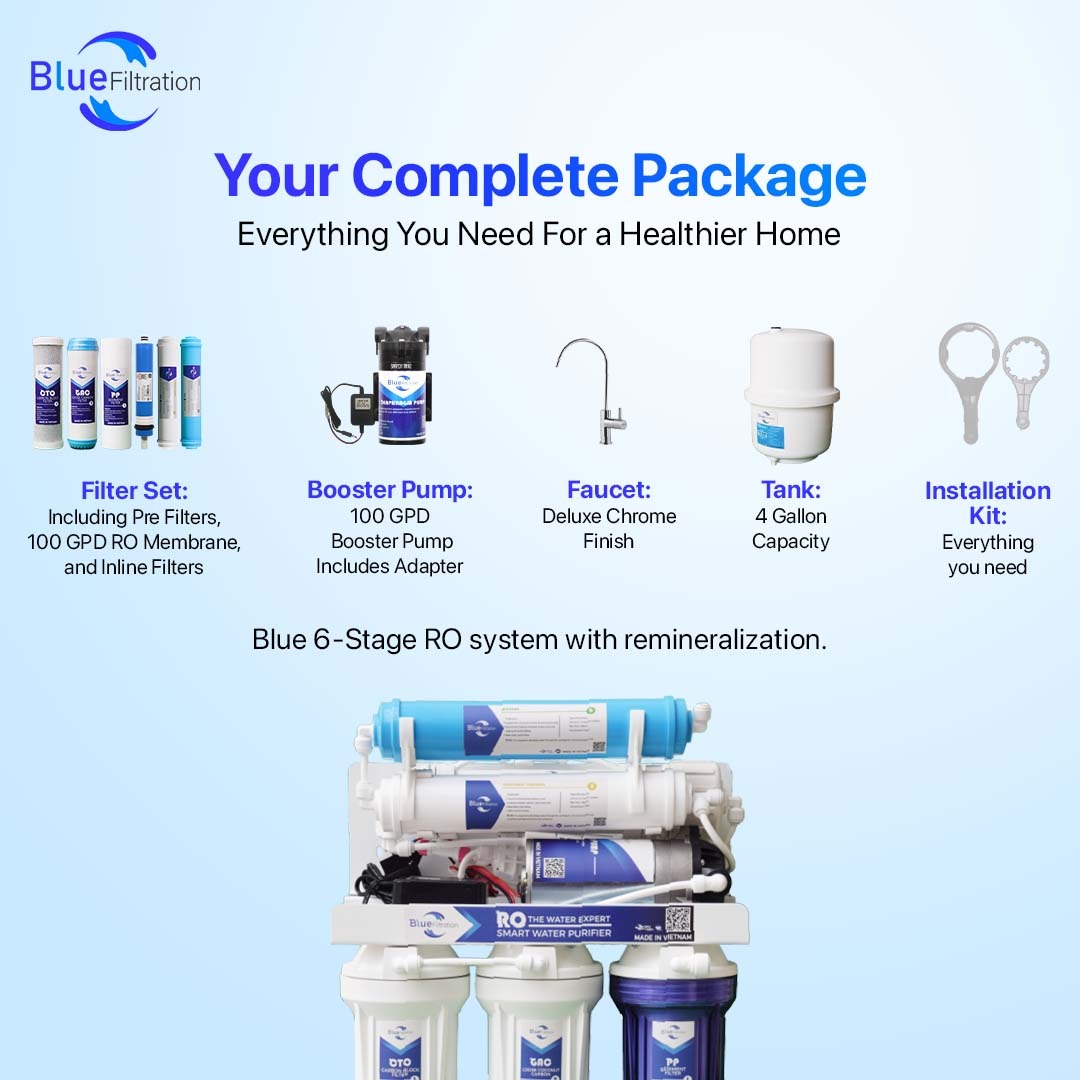
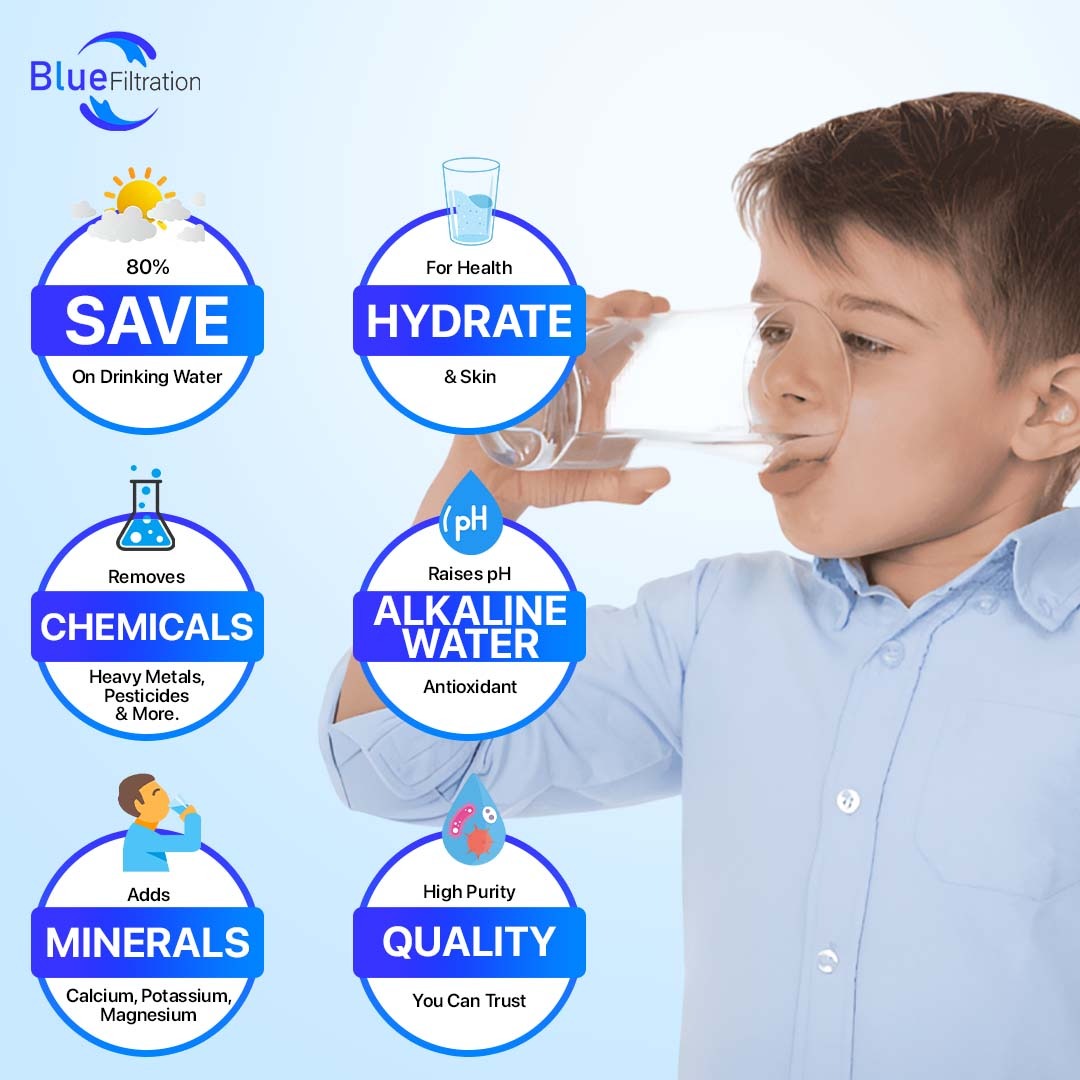
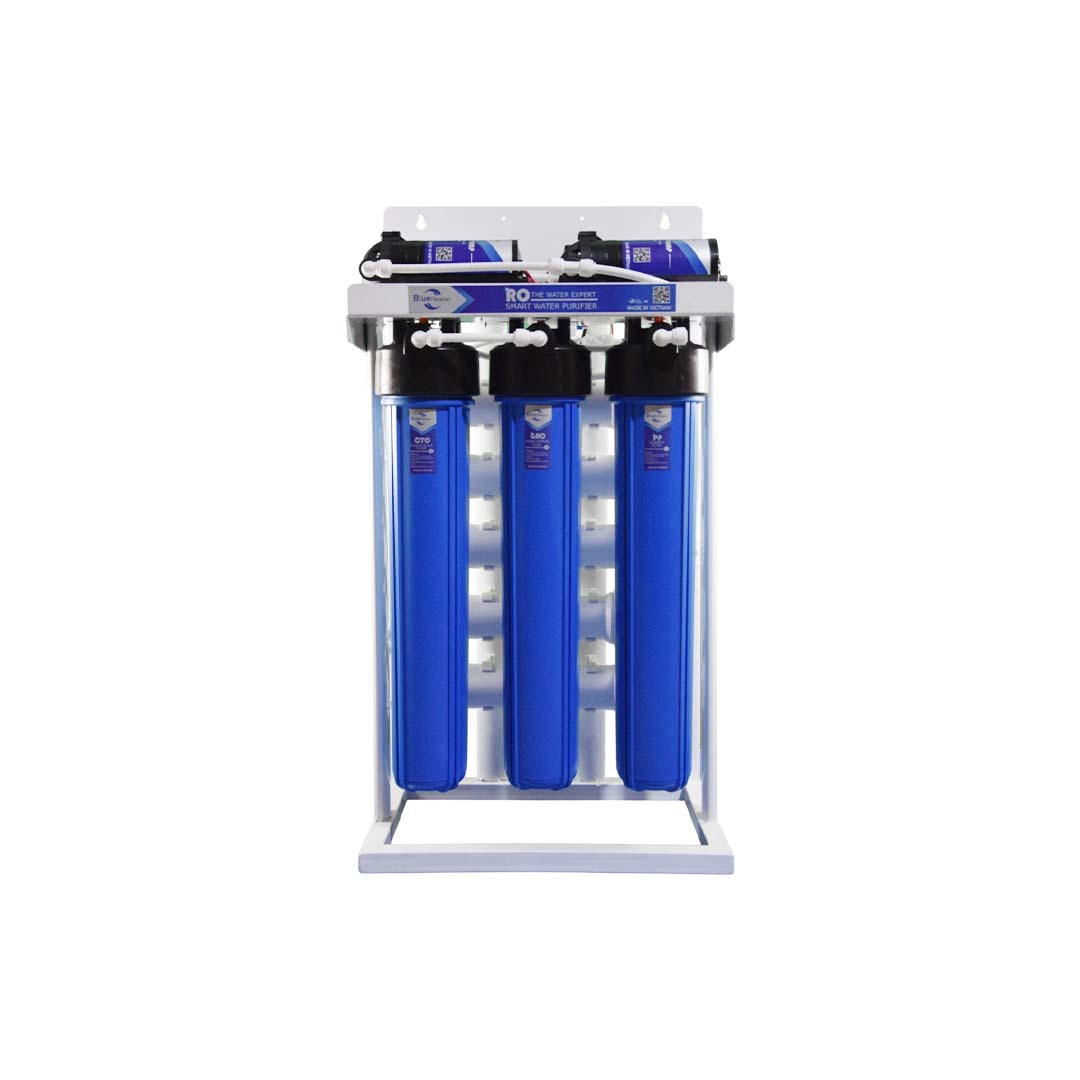
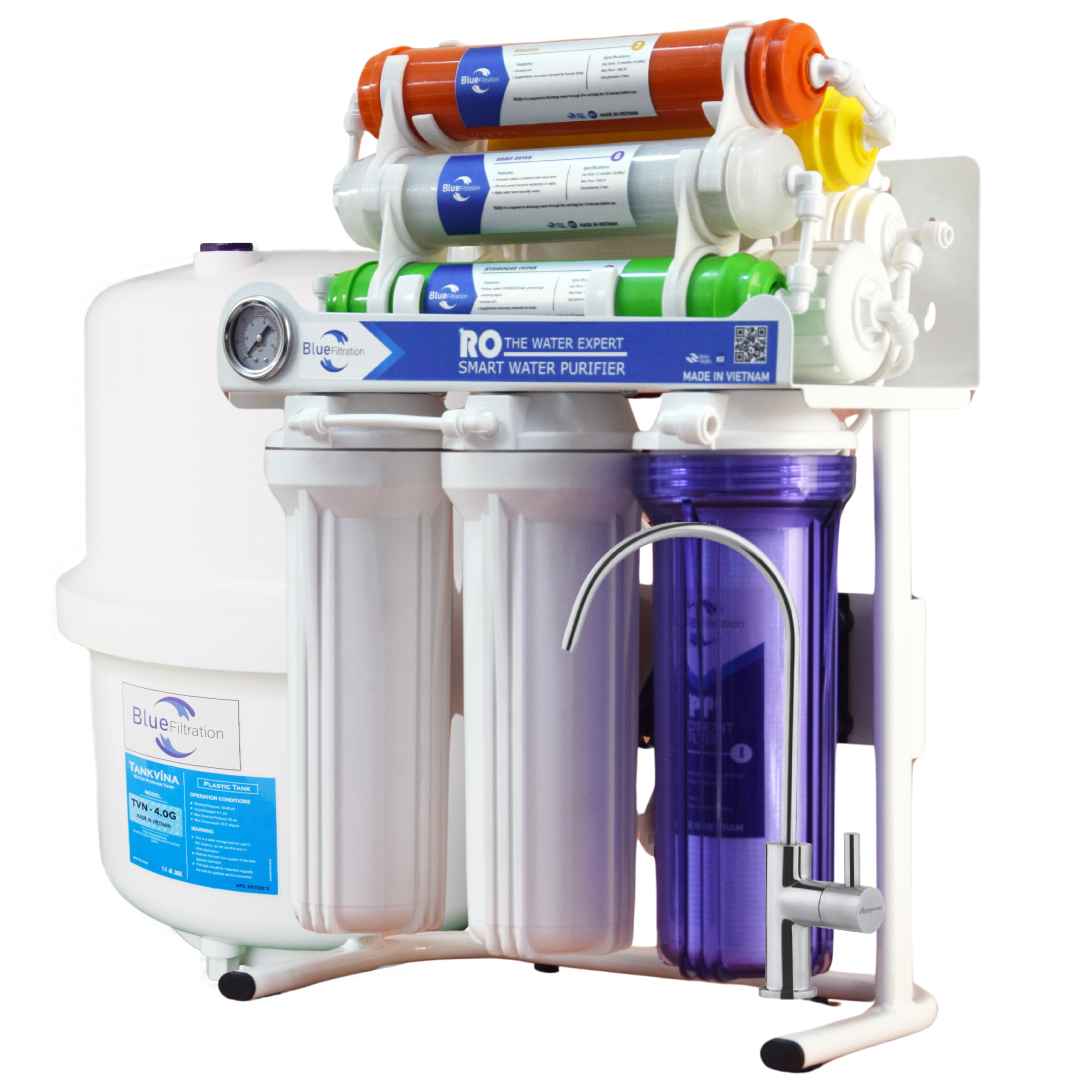
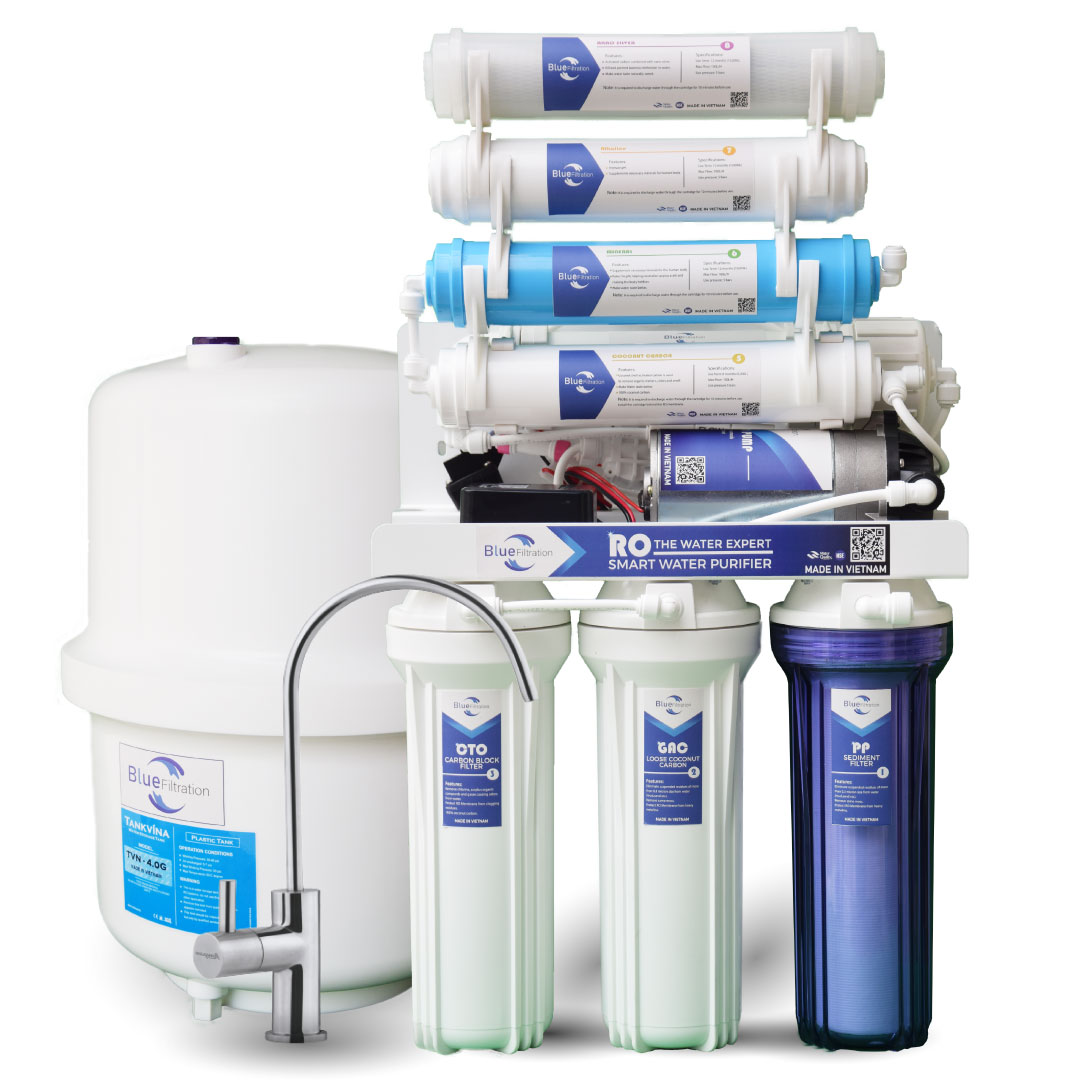
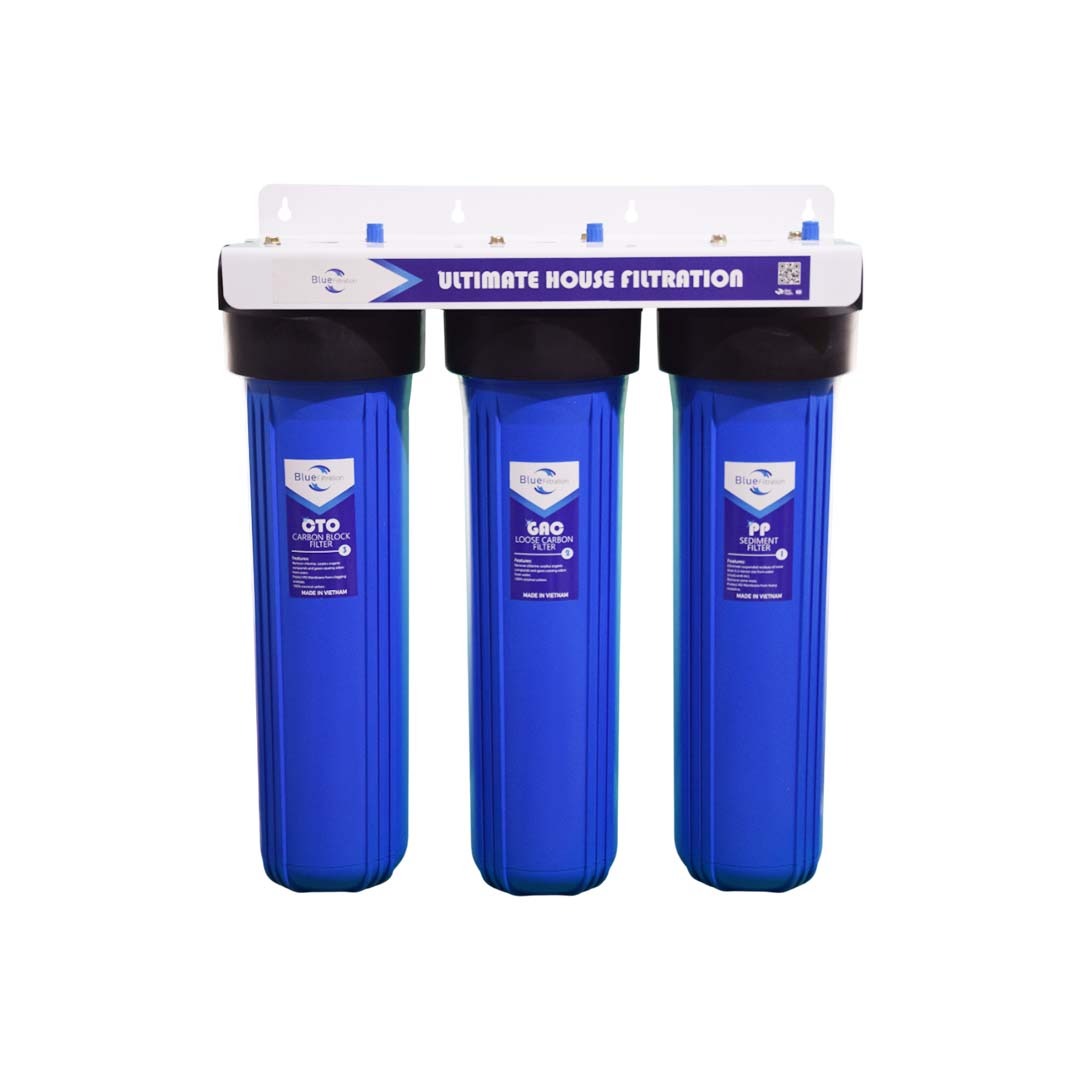
Reviews
There are no reviews yet.